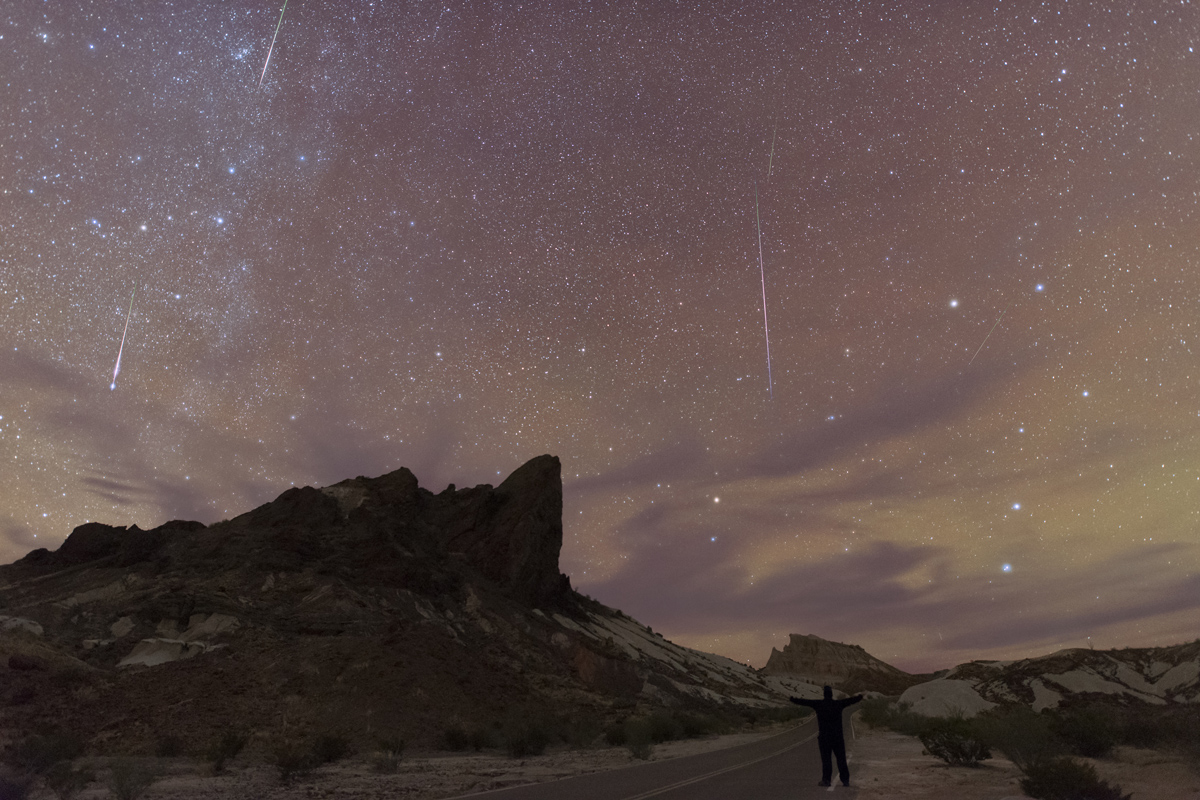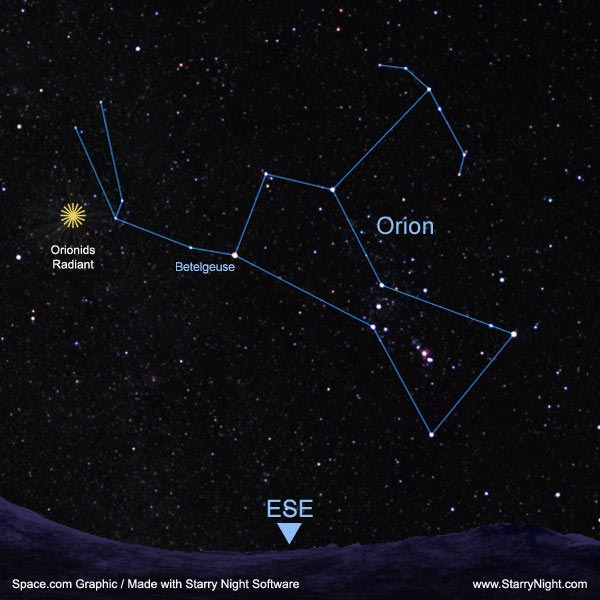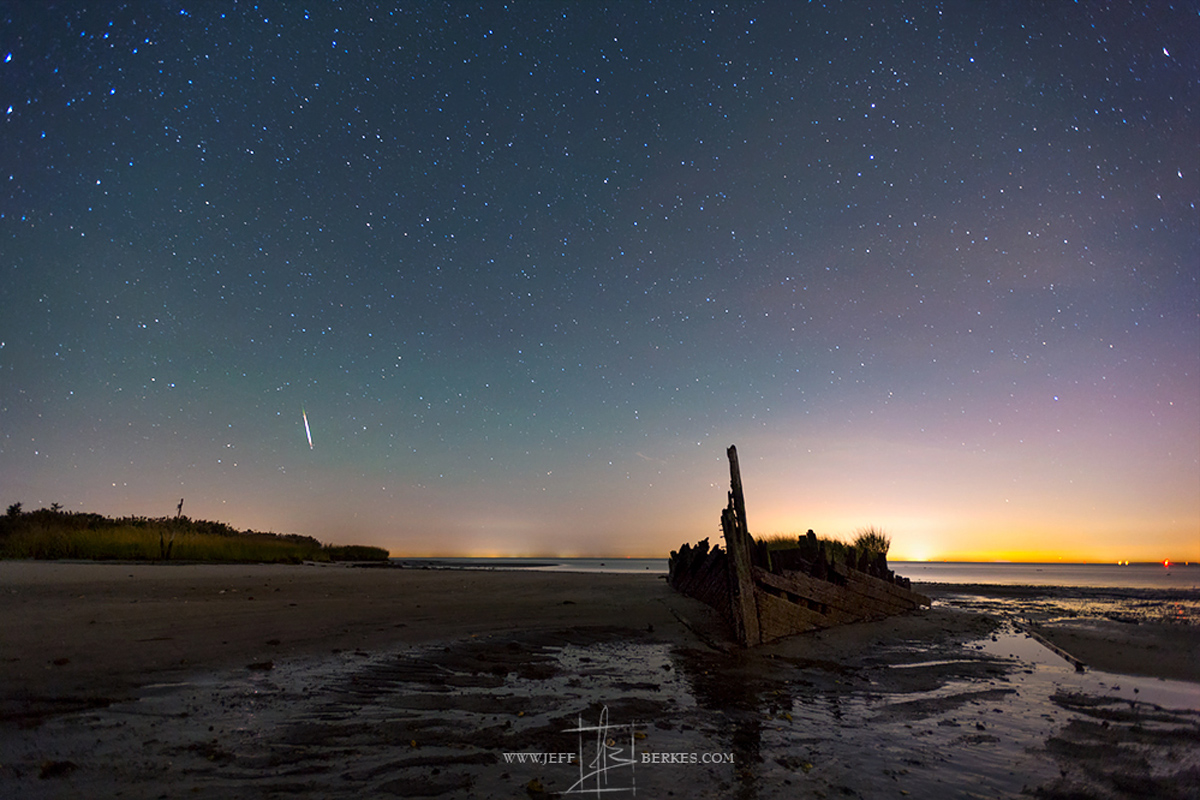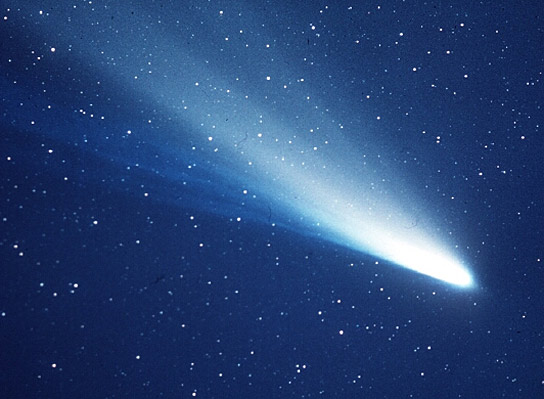The Orionid meteor shower peaks this week! Here's what to expect.
On a night this past summer, soon after sunset, a number of people gathered at a little-league field, not far from my home, eagerly awaiting nightfall and the appearance of the stars. We had also gathered there because there wasn't much in the way of light pollution and we were afforded a clear and unobstructed view toward the northwest. As the sky darkened, we finally could see it: Comet NEOWISE, displaying a lovely, curved tail.
"Not a bad show, considering we're looking at a cosmic litterbug," I said to the coterie of comet gazers. "Really, what we're looking at is a piece of garbage out in space; think of that beautiful tail as 'cosmic litter'; little pieces of dust and grit left behind by NEOWISE, all cluttering up the solar system."
If you step outside before dawn during the next week or so, you might try to catch a view of cosmic litter that has been left behind in space by an even more famous comet: Halley's. We call that cosmic litter the Orionid meteor shower. And 2020 will be an excellent year to look for them, since the moon will be a slender crescent, four days past new phase and will have set before 9:30 p.m. local time on the night of their peak activity, and will not pose any hindrance whatsoever to prospective meteor observers.
Related: How to see the best meteor showers of 2020
If the December Geminids and August Perseids can be considered ranking as the "first string" among the annual meteor showers in terms of brightness and reliability, then the Orionids are on the junior varsity. This year they are scheduled to reach their maximum before sunrise on Wednesday morning (Oct. 21).
The name "Orionid" comes from the fact that the radiant — that spot on the sky from where the meteors appear to fan out from — is just above Orion's second brightest star, ruddy Betelgeuse.
Currently, the Orion constellation appears ahead of us in our journey around the sun and has not completely risen above the eastern horizon until after 11 p.m. local daylight time. At its best several hours later, at around 5 a.m., Orion will be highest in the sky toward the south.
Breaking space news, the latest updates on rocket launches, skywatching events and more!
But to see the greatest number of meteors, don't look in the direction of the radiant, but rather about 30 degrees from it, in the direction of the point directly overhead (the zenith). Your clenched fist held at arm's length is roughly equivalent to 10 degrees wide, so looking "three fists" up from Betelgeuse will be where to concentrate your view.
Best times to watch
Orionid visibility extends from Oct. 16 to Oct. 26, with peak activity of perhaps 15 to 30 meteors per hour coming on the morning of Oct. 21. Step outside before sunrise on any of these mornings and if you catch sight of a meteor, there's about a 75% chance that it likely is a byproduct of Halley's Comet. The very last Orionid stragglers usually appear sometime in early to mid-November.
The best time to watch begins from about 1 or 2 a.m. local daylight time until the first light of dawn (at around 5:45 a.m.), when Orion stands highest above the southern horizon. The higher in the sky Orion is, the more meteors appear all over the sky. The Orionids are one of just a handful of known meteor showers that can be observed equally well from both the Northern and Southern Hemispheres.
Orionid meteors are normally dim and not well seen from urban locations, so it's suggested that you find a safe rural location to see the best Orionid activity.
"They are easily identified ... from their speed," authors David Levy and Stephen Edberg wrote in their book, "Observe Meteors: The Association of Lunar and Planetary Observers Meteor Observer's Guide" (Astronomical League, 1986). "At 66 kilometers (41 miles) per second, they appear as fast streaks, faster by a hair than their sisters, the Eta Aquarids of May. And like the Eta Aquarids, the brightest family members tend to leave long-lasting trains. Fireballs are possible three days after maximum."
Undoubtedly this is connected in some way to the makeup of Halley's Comet.
Halley's legacy
Comets are the leftovers of the earliest days of the solar system, the odd bits and pieces of simple gases — methane, ammonia, carbon dioxide and water vapor — that went unused when the sun and planets came into their present form. Meteoroids that are released into space out of this cometary debris are the remnants of a comet's nucleus. All comets eventually disintegrate into meteor swarms and Halley's is well into that process at this time.
These tiny particles — mostly ranging in size from dust to sand grains — remain along the original comet's orbit, creating a "river of rubble" in space. In the case of Halley's Comet, its dirty trail of debris has been distributed more or less uniformly all along its entire orbit. When these tiny bits of comet collide with Earth, friction with our atmosphere raises them to white heat and produces the effect popularly referred to as "shooting stars."
And Halley's Comet has left a legacy that is visible to us in the form of not just one, but two annual meteor showers. This is because its orbit closely approaches the Earth's orbit at two different places. One intersection point (alluded to by Levy and Edberg) is in the early part of May, producing a meteor display known as the Eta Aquarids. The other point comes right now, in the middle to latter part of October, producing the Orionids.
At this moment in time, Halley itself is nearing the far end of its long elliptical path around the sun, out beyond the orbit of Neptune. Its last visit through the inner solar system was in the winter of 1986. It will arrive at aphelion — its farthest point from the sun, 3.28 billion miles (5.28 billion km) — in early December 2023. Thereafter, it will begin its long journey back toward the sun, due to return in the midsummer of 2061. If you were born any time after 1983, you probably have a better than 50-50 chance to catch it on its next return.
But for folks like myself — who will probably not be around when it returns — the Orionids will give us a chance to at least catch a view of some of the cosmic debris Halley has left behind in its wake.
Joe Rao serves as an instructor and guest lecturer at New York's Hayden Planetarium. He writes about astronomy for Natural History magazine, the Farmers' Almanac and other publications. Follow us on Twitter @Spacedotcom and on Facebook.

Joe Rao is Space.com's skywatching columnist, as well as a veteran meteorologist and eclipse chaser who also serves as an instructor and guest lecturer at New York's Hayden Planetarium. He writes about astronomy for Natural History magazine, Sky & Telescope and other publications. Joe is an 8-time Emmy-nominated meteorologist who served the Putnam Valley region of New York for over 21 years. You can find him on Twitter and YouTube tracking lunar and solar eclipses, meteor showers and more. To find out Joe's latest project, visit him on Twitter.




